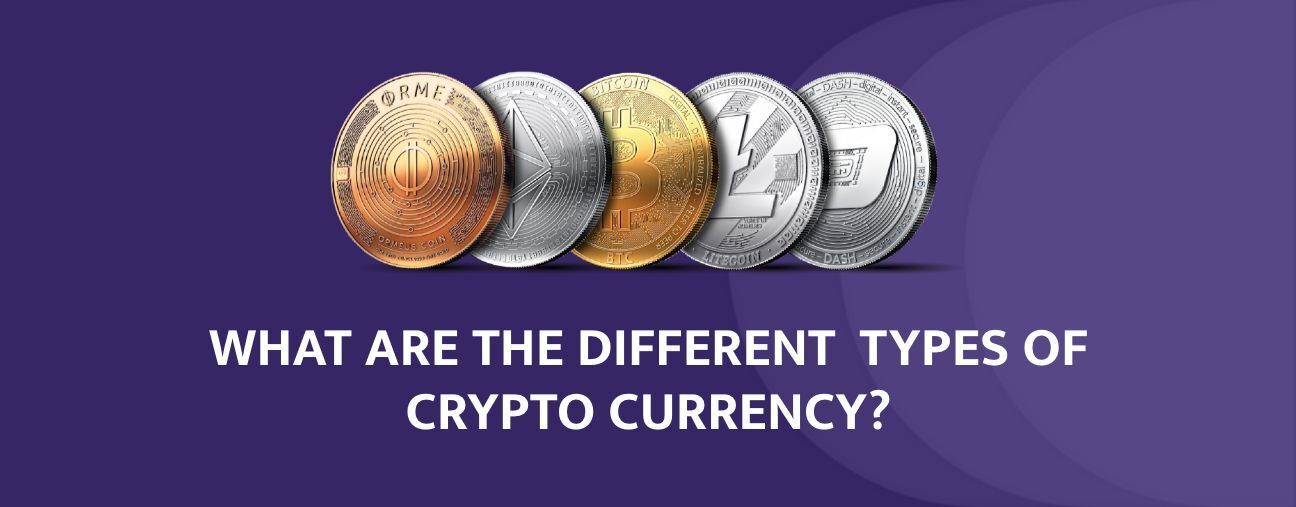Summary: Thousands of additional types of cryptocurrency have been launched since Bitcoin made its debut in 2009. The current crypto environment is composed of an amazing variety of digital assets with varied technical specifications and intended purposes. Learning about these assets can be daunting when there are too many of them. Fortunately, it is simpler to understand each asset when they are divided into different categories.
So, what are they? We’re so glad you asked.
Introduction
Bitcoin is the first modern cryptocurrency, launched in 2009. Bitcoin demonstrated the potential of blockchain-based digital currencies and drew immediate interest from investors, technical experts, and idealists who supported the concept of a free currency that avoided bankers’ barriers and restrictions.
Bitcoin (CRYPTO:BTC), since its inception, has become a revolutionary digital currency. Bitcoin’s decentralized nature, which allows for peer-to-peer transactions without the use of a middleman (like a bank), has sparked the creation of millions of other cryptocurrencies and blockchain-based assets.
With the success of Bitcoin, blockchain has burst onto the scene, and its potential to decentralize and improve the digital economy appears to be on track to revolutionizing the present order.
Understanding Blockchain
In order to understand the different types of cryptocurrencies, one must first understand blockchain. Blockchain is a digital ledger that allows for secure and transparent peer-to-peer transactions. Transactions made on a blockchain are verified by a decentralized network of computers, known as nodes. These nodes work together to confirm each transaction made on the blockchain, ensuring that the information is accurate and has not been tampered with.
The Crypto Menagerie
Since Bitcoin’s launch in 2009, there have been over 12,000 additional cryptocurrencies created! Bitcoin was initially designed as a way for people to conduct financial transactions over the internet. The goal of bitcoin was to create an independent payment system that would function independently of centralized control, while also serving as a conventional currency.
That isn’t as far-fetched a notion as it might appear. Electronic transactions are becoming increasingly popular, particularly online and using credit and debit cards. Paper money is on its way out. Why not use a currency that was created for internet transactions? In fact, several such currencies were created in the 1980s and 1990s. Until Bitcoin was introduced, none had a large following.
There are now more than 18,000 distinct cryptocurrencies in existence, with a combined market capitalization of $2 trillion.
Today, cryptocurrency is being used for everyday transactions. Many brands across the world are already accepting crypto payments. to replace or complement government-issued money. That revelation implies that if Bitcoin has already arrived, why have thousands of additional crypto currencies been created?
Why are there so many different types of cryptocurrency?
Since Blockchain is an open-source technology, it means that anybody with a computer and some programming knowledge can modify the source code and develop their own unique applications. That’s precisely what they’ve done. There are thought to be over 10,000 distinct cryptocurrencies in circulation at the moment, with the number constantly growing. Only four years ago, there were only about 1000 different cryptos in circulation.
Another factor that contributes to the increase is how simple it is to launch new cryptocurrencies. One code may be utilized to construct another. For example, you might use the Ethereum network to create your own personal digital currency. There may be “forks” in the software code that modify the rules regarding how crypto is governed, resulting in the formation of new Bitcoin Cash (CRYPTO:BCH) in 2017 as a result of a Bitcoin fork that allows for more transactions to be recorded on a single block of the blockchain.
Many developers are attempting to get a piece of the action when crypto prices surge. And blockchain technology has more uses than simply cryptocurrencies. So, while some cryptocurrencies might be a bubble that will eventually burst, there are a variety of reasons why there are so many cryptos.
What are Coins and Tokens?
In the crypto industry, coins are the native asset of a Blockchain like Bitcoin or Ethereum, whereas tokens are produced by platforms and applications that run on top of an existing Blockchain.
The term “tokens” is used to describe virtual coins that are utilized for governance, transaction costs, and other Blockchain-related purposes. Experts claim that they are the foundations and backbone of the Blockchain. Tokens may be used to represent a wide range of real-world applications such as gaming, NFTs, Stablecoins, and other charges.
Coins versus Tokens
When it comes to cryptocurrencies, you’ll hear the phrases “coin” and “token” a lot. Although they seem to be synonymous, there is a distinction between them. Let’s first understand the difference between a coin and a token. Both coins and tokens are digital assets that use blockchain technology, but they differ in some key ways.
It’s important to note that cryptocurrencies are not the same thing as electronic currencies, which are used in mobile apps and e-commerce. Cryptocurrencies, on the other hand, exist solely on computer software called a blockchain and work similarly to real money. It may be used to store value and act as a medium of trade between two parties conducting business in the digital world. Like cash, cryptocurrency is decentralized, which means it isn’t subject to government or financial institution control.
Cryptocurrency coins are standalone entities that have their own blockchain. The most well-known example of a coin is Bitcoin (CRYPTO:BTC), which has its own blockchain known as the Bitcoin blockchain. Other examples of coins include Ethereum (CRYPTO:ETH), Litecoin (CRYPTO:LTC), and Monero (CRYPTO:XMR).
Tokens are digital assets that are built on top of an existing blockchain. The most well-known example of a token is ERC20, which is built on the Ethereum blockchain. Other examples of tokens include Tether (USDT), Binance Coin (BNB), and Chainlink (LINK). They may be utilized in a software app (such as to distribute access to an app, verify identity, or follow products throughout the supply chain). They can be used to represent digital art (as with NFTs, or “non-fungible tokens,” which certify something as unique).

| COINS | TOKENS |
|---|---|
| It is in-built and native to its own blockchain technology | It is built over the existing blockchain |
| Significant resources and skills are required to create it | It is relatively easier to create it |
| It is mostly distributed through mining | It is mostly distributed through Initial Coin Offerings |
| It is used for storing or transferring money | It has a variety of uses from asset representation to security and more |
| It is valid with any merchant who utilizes the currency | It can be used with one merchant only |
While cryptocurrencies and tokens are closely linked, they are two separate things.
Now that we’ve explained the difference between coins and tokens, let’s dive into the types of cryptocurrency categories!
Main Types of Cryptocurrency
Every type of cryptocurrency has its own unique features and purposes. Here is a breakdown for your ease of understanding.
The distinct types or categories of cryptocurrency are: crypto, exchange tokens, DeFi tokens, NFTs, stablecoins, security, payment, utility, and asset-backed tokens. These categories are defined by a variety of criteria including the cryptocurrency’s structure or code, application or use case, and functionality
Let’s dig deeper to understand each of these crypto categories even better.
Crypto: Cryptocurrency is decentralized and not subject to government or financial institution control. Bitcoin, the first and most well-known cryptocurrency, was created in 2009 as a peer-to-peer electronic cash system. Bitcoin can be used to purchase goods and services, or traded on decentralized exchanges.
Exchange Tokens: These are used to trade other cryptocurrencies on decentralized exchanges. Binance Coin (CRYPTO:BNB) is an example of an exchange token, used to trade cryptocurrencies on the Binance DEX.
DeFi Tokens: “Decentralized Finance,” is a movement that aims to create financial products and services on decentralized protocols. Maker (CRYPTO:MKR) is an example of a DeFi token, used to collateralize loans on the Maker Protocol.
NFTs: “Non-Fungible Tokens,” are digital assets that are unique and not interchangeable. CryptoKitties (CRYPTO:CK) is an example of an NFT, used to trade digital collectibles.
Stablecoins: These are digital assets that aim to stabilize their price by pegging it to a fiat currency or other asset. USD Coin (CRYPTO:USDC) is an example of a stablecoin, pegged to the U.S. dollar.
Security Tokens: These are digital assets that represent an investment in a company or project. Polymath (CRYPTO:POLY) is an example of a security token, used to trade securities on the Polymath Network.
Payment Tokens: These are digital assets that can be used to make payments for goods and services. Ripple (CRYPTO:XRP) is an example of a payment token, used to make cross-border payments on the Ripple Network.
Utility Tokens: These are digital assets that can be used to access a decentralized application or service. Filecoin (CRYPTO:FIL) is an example of a utility token, used to trade storage space on the Filecoin Network.
Asset-Backed Tokens: They are digital assets that are based on real-world items. Tether (CRYPTO:USDT) is an example of an asset-backed token, backed by U.S. dollars held in reserve.
Cryptocurrency Trading
Investing in cryptocurrencies is not the same as investing in a firm’s shares. A stock is a claim to future income and ownership of a company. Buying crypto, on the other hand, is a speculative wager on the price movement of that digital currency– which may be highly unpredictable and subject to supply and demand laws because bitcoin isn’t a dynamic asset.
You can trade cryptocurrencies for different digital currencies or fiat currencies like the US dollar. There are other methods to make money outside of trading. Staking certain cryptocurrencies may result in rewards.
After a cryptocurrency has been purchased, it may be stored in the account and used to authenticate transactions on the blockchain network. This approach of generating a blockchain network is referred to as “proof of stake,” and the owner of the cryptocurrency may earn a kind of dividend by staking their assets, which are generally paid in additional coins or tokens.
Leading derivatives exchange CME Group (NASDAQ:CME) offers both digital currencies and derivative contracts on Bitcoin and Ethereum (NASDAQ:CME). Futures and options are typically used as a hedge against price fluctuations in the underlying asset.
Endnote
With so many types of cryptocurrencies, it can be difficult to keep track of them all. But understanding the different types is important for understanding how they work and what their purpose is. Different types of cryptocurrencies serve different purposes, and each has its own unique features.
Now that you know about them, which ones are you interested in?
And don’t forget to share this blog with your friends and followers – knowledge is power.
Disclaimer: The information presented on this website is intended for general informational purposes only and should not be interpreted as professional advice from CRPTM. CRPTM does not offer financial advice. We strongly recommend seeking independent legal, financial, tax, or other professional advice to determine how the information provided on this website applies to your specific circumstances. CRPTM assumes no liability for any loss incurred, whether due to negligence or otherwise, resulting from the use of or reliance on the information contained herein.


